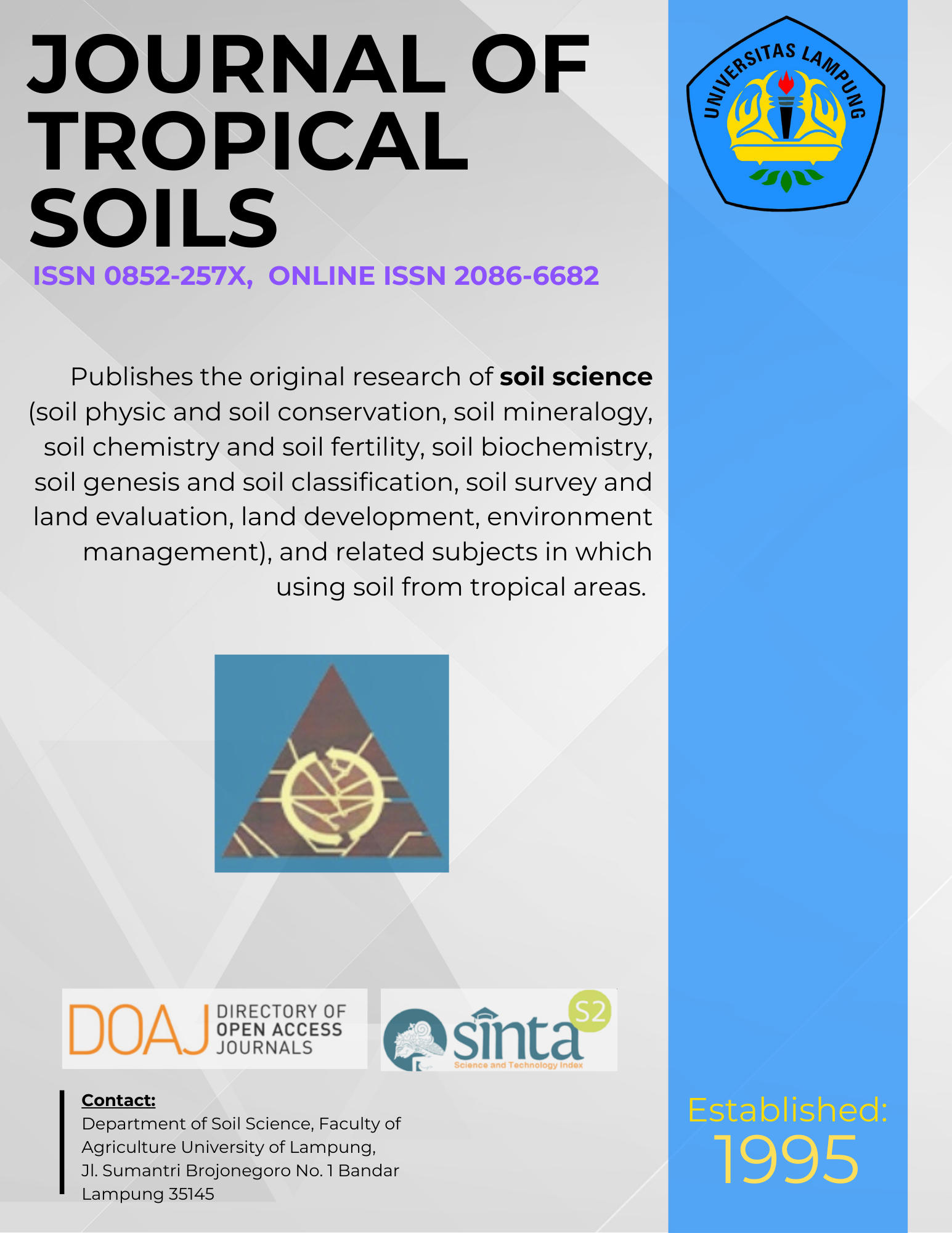Improvement of Soil Chemistry Characteristic of Upland with Rock Phosphate, Phosphate-Solubilizing Bacteria and Farm Yard Manure For Increase of Soybean Yield
Main Article Content
Abstract
The experiment aims to know the role of rock phosphate, phosphate-solubilizing bacteria and farm yard manure application in improve quality of acid upland and its influence to soybean yield. Experiment was conducted in the greenhouse using Ultisols from Kentrong at 2001 year. Factorial experiment design with two factors was used in randomized complete block design with three replications. The first factors was rock phosphate dosages i.e. : 0; 30; 60; 90 kg P ha-1, and the second factor was combination of phosphate solubilizing bacteria (PSB) and farm yard manure (FYM) i.e. : without PSB and FYM (control); PSB (Pseudomonas fluorescens); FYM 10 t ha-1, and PSB+FYM. Results indicated that rock phosphate and combination of PSB and FYM application increased available P and decrase exchangeable Al of soils, increase nutrient uptake N, P, nodulation and grain yield of soybean. Application of phosphate solubilizing bacteria and farm yard manure combination with rock phosphate 30 kg P  ha-1 dosages average increase grain yield soybean 23.5% compared with control. Grain yield of soybean 87% affected by variables of available P soils (X1), nutrient uptake N (X4) and P (X5), with multiple regression equation : Y = 0.241 + 0.03900 X1 + 0.00470 X4 + 0.04263 X5.
Downloads
Article Details
Section
License for Authors
Authors who publish with this journal agree to the following terms:
- Authors retain copyright and grant the journal right of first publication with the work simultaneously licensed under a Creative Commons Attribution License that allows others to share the work with an acknowledgement of the work's authorship and initial publication in this journal.
- Authors are able to enter into separate, additional contractual arrangements for the non-exclusive distribution of the journal's published version of the work (e.g., post it to an institutional repository or publish it in a book), with an acknowledgement of its initial publication in this journal.
- Authors are permitted and encouraged to post their work online (e.g., in institutional repositories or on their website) prior to and during the submission process, as it can lead to productive exchanges, as well as earlier and greater citation of published work (See The Effect of Open Access).
License for Regular Users
Other regular users who want to cite, distribute, remix, tweak, and build upon author’s works, even for commercial purposes, should acknowledge the work’s authorship and initial publication in this journal, licensed under a Creative Commons Attribution License.

